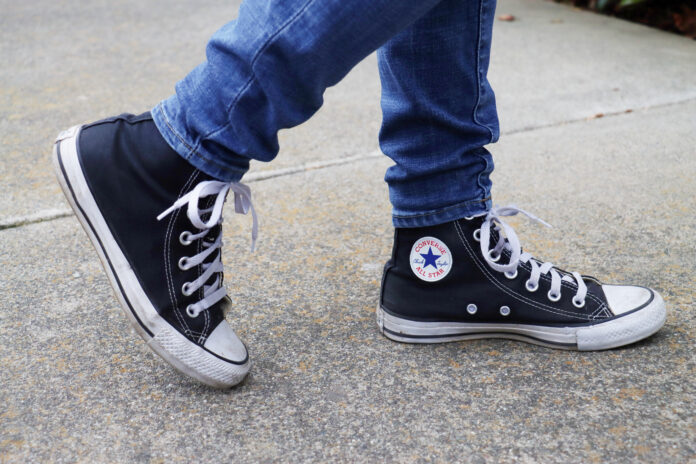Taking a look into how the iconic shoe brand changed the fashion game
By SARAH HAN — arts@theaggie.org
From tying your outfit together to working out, Converse makes some of the most timeless sneakers in the shoe industry — the classic All-Star logo, polished toe cap and numerous styles all contribute to their revolutionary design. Here is a rundown on how this versatile shoe came to be.
In 1908, Marquis Mills Converse launched the “Converse Rubber Shoe Company” in Malden, Massachusetts. The first Converse “All-Star” was an elite basketball shoe that was made with the original canvas and rubber, both materials that are still used for production today. At this time, Converse shoes were made for functionality.
Thirteen years after the launch, American basketball player Chuck Taylor joined the Converse team, which revolutionized the company’s design and ultimately led to increased sales. Taylor pitched unique designs and marketing ideas, one of which centered around spreading awareness about basketball: He held basketball clinics in schools nationwide, taught basketball to kids and shared shoes and Converse yearbooks. Due to his tremendous contributions, “Chuck Taylor” was imprinted on the All-Star logo.
In 1936, the partnership with Taylor also increased the shoe’s popularity among basketball players, especially when he helped design the white high-top model with the red-and-navy rim for the USA’s 1963 Olympic basketball team. This particular design resonated with the players and the fans because of an increased sense of patriotism as a result of World War II. The white, red and navy-colored shoe was also worn by the United States Armed Forces.
After World War II, Converse designed the black-and-white high-top model, which was added to the basketball teams’ collection. Players, from the NBA to college and high school, all wore either white All-Stars or black All-Stars, making Converse one of the most popular, unique shoes in the industry.
Following the high-top’s massive popularity, Converse introduced the “Oxford” model — a low-top version of the iconic style. This model was particularly tailored toward consumers who wanted an every day, leisure-friendly shoe. Various colors and prints also debuted with the Oxford, attracting millions of athletes and regular consumers nationwide.
In 1969, Taylor passed, and in the years that followed, Converse lost its title as one of the most popular shoe brands. Nike and similar companies began dominating the basketball shoe industry, introducing high-performance technologies and sleek designs. However, Converse poured its efforts into targeting regular consumers by characterizing the shoes as comfortable, leisure-friendly and casual.
Fortunately, this change in marketing strategy appealed to a whole new group: musicians. In the ‘80s and ‘90s, punk-rock musicians hopped on the bandwagon and started to wear Converse sneakers, which paved the way for the company to create funky and fresh colors and patterns. Soon enough, millions were on board with the shoe’s effortless and minimalist style.
In July 2003, Nike bought Converse. It was assumed that Converse’s popularity would plummet, but it did the exact opposite. The sneakers became a fashion statement for pop artists and daily shoes for skateboarders. By 2012, the company had generated $450 million from Chuck All-Stars.
Today, Converse has made over $2.3 billion in revenue, with millions of children, teenagers, athletes and adults wearing its products. The well-known shoes also became popular among celebrities, politicians and influencers, from Michelle Obama to Millie Bobby Brown.
However, the most appealing aspect of the company is its consistency. It has been operating for over 100 years and has yet to change its timeless design. Collaboration after collaboration, the company remains true to its wardrobe-staple roots.
Written by: Sarah Han — arts@theaggie.org




